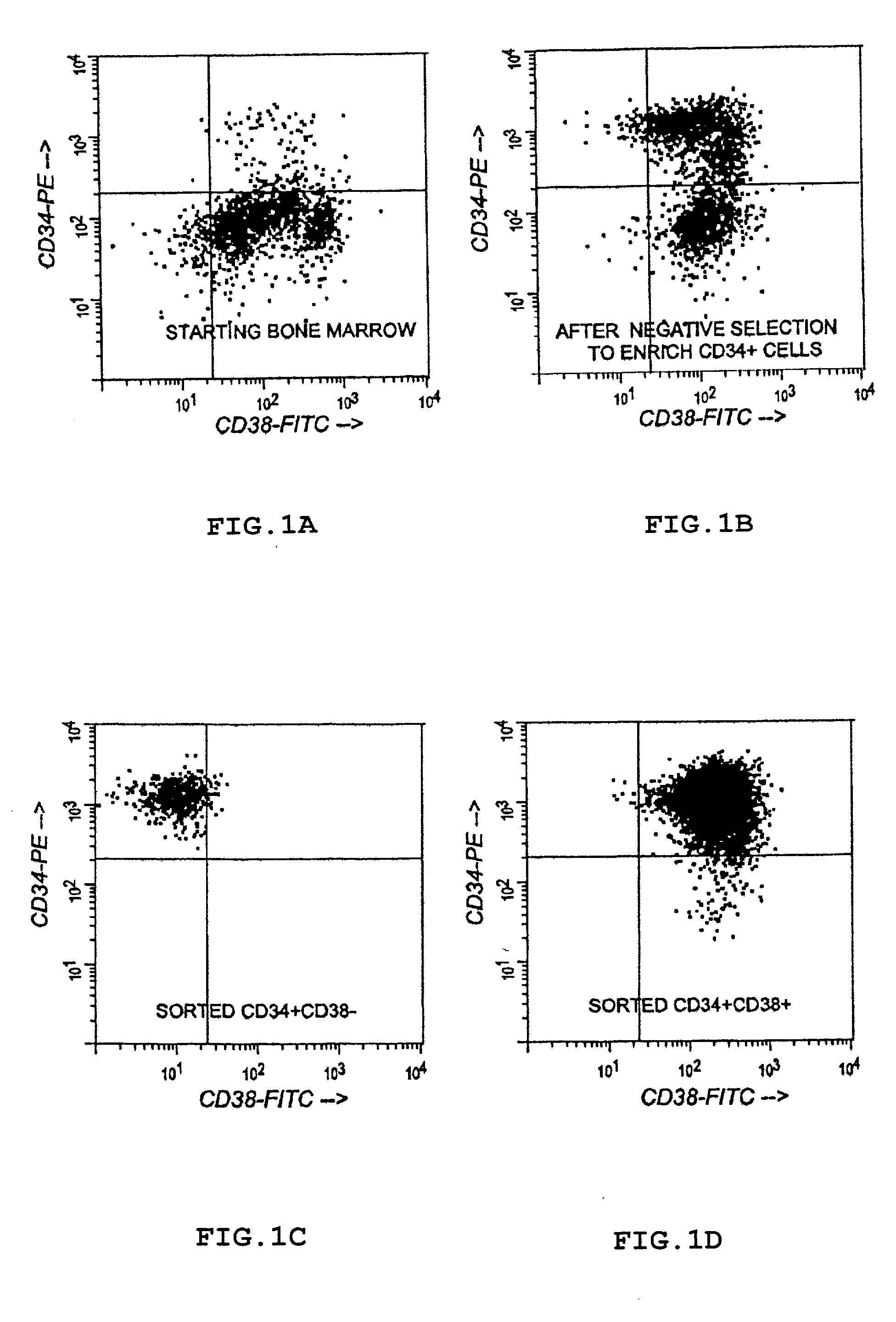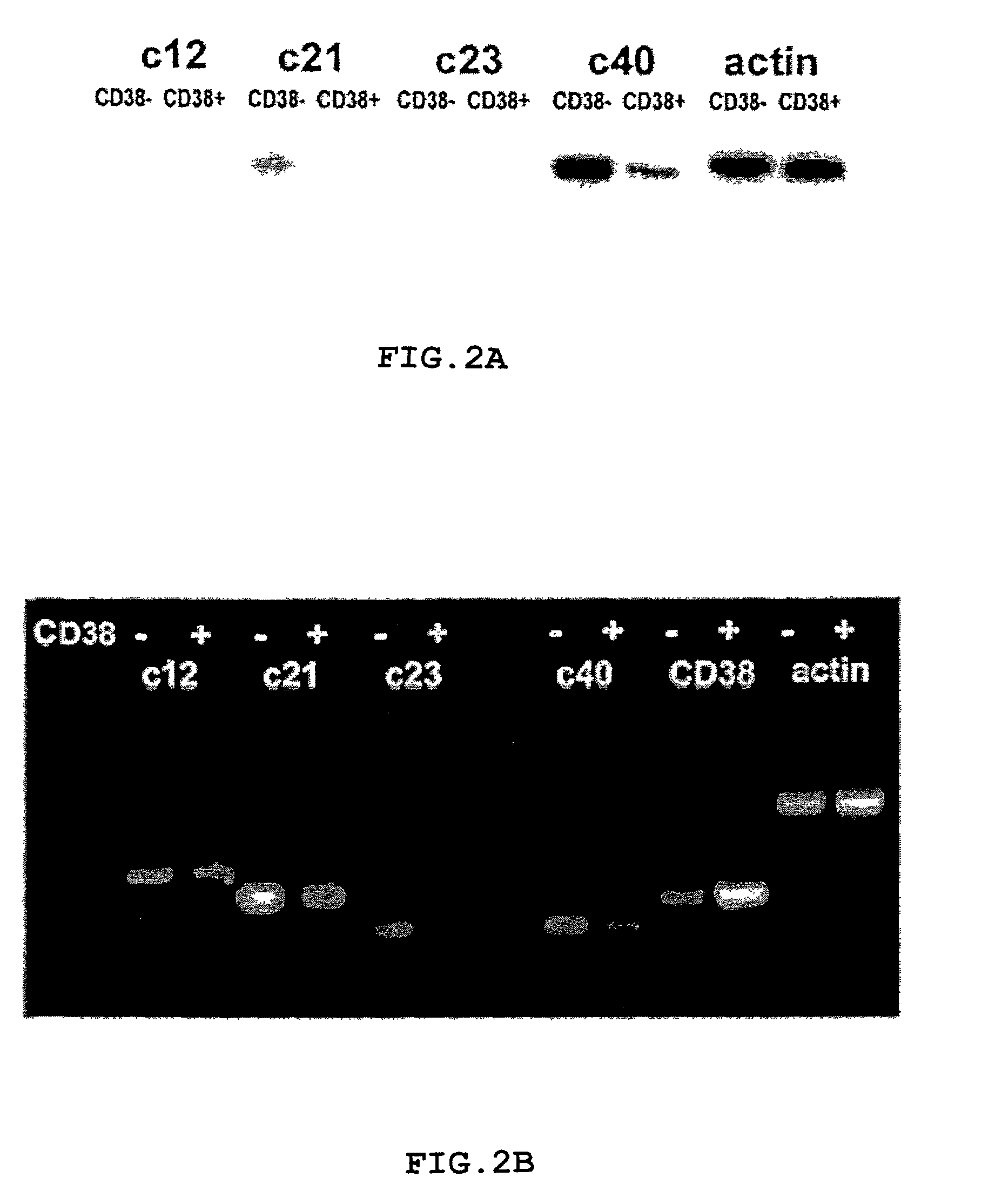Protein that modulates the stability of transcriptional regulatory complexes regulating nuclear hormone receptor activity, DNA encoding same, and antibodies thereto
a transcriptional regulatory complex and protein technology, applied in the direction of peptides, peptide/protein ingredients, peptide sources, etc., can solve the problems of increasing limited self-renewal capacity, and malignant phsc, so as to improve the resistance of phsc to apoptosis stimuli, alter the development of myeloid cells, and high levels
- Summary
- Abstract
- Description
- Claims
- Application Information
AI Technical Summary
Benefits of technology
Problems solved by technology
Method used
Image
Examples
example 1
[0088] Using CD34+ / CD38− cells as starting material, the laboratory of the present inventor has identified four mRNAs, expressed by these cells that are either absent or present in reduced amounts in more mature CD34+ / CD38+ cells. One of these cDNAs (C40) encodes a known member of the subfamily of protein phosphatases (CL100) that exhibits dual substrate specificity for phosphotyrosine- and phosphoserine / threonine-containing substrates and specifically inactivates MAP kinases. This phosphatase has been shown to play a role in regulating the differentiation of several cell types. The second cDNA, (C23) is identical to LR11 (gp250) a member of the Low Density Lipoprotein Receptor family. LR11 is unusual in that in addition to 11 ligand-binding repeats, it contains a series of fibronectin type III repeats near its carboxyl-terminal end which are similar to those found in cytokine receptors. It is highly expressed in developing brain but hematopoietic expression has not been reported. T...
example 2
Isolation of C21
[0116] C21 was identified in a cDNA library prepared by subtractive hybridization between CD34+ / CD38− and CD34+ / CD38+ BMC in an attempt to identify genes expressed in the earliest stages of hematopoietic differentiation. To determine if the human cDNA could actually be translated into a protein, the laboratory of the present inventor used it in an in vitro translation system and the results are shown in FIG. 7. The product produced from the cloned cDNA encodes a protein which has the predicted molecular mass of 56-57 kDa. The homologous mouse gene was also identified.
Genomic Structure of Human hC21
[0117] C21 is located on chromosome 3 between 3q26 and 3qter. The gene occupies ˜100 Kb and the coding structure is assembled from 14-16 small exons. The translational start site is located in the 3rd exon and is 50 kb downstream from the first exon. The mouse sequence (SEQ ID NO:11), which encodes the amino acid sequence of mouse C21 (SEQ ID NO:12) also is assembled f...
PUM
| Property | Measurement | Unit |
|---|---|---|
| Tm | aaaaa | aaaaa |
| Tm | aaaaa | aaaaa |
| ionic strength | aaaaa | aaaaa |
Abstract
Description
Claims
Application Information
 Login to View More
Login to View More - R&D
- Intellectual Property
- Life Sciences
- Materials
- Tech Scout
- Unparalleled Data Quality
- Higher Quality Content
- 60% Fewer Hallucinations
Browse by: Latest US Patents, China's latest patents, Technical Efficacy Thesaurus, Application Domain, Technology Topic, Popular Technical Reports.
© 2025 PatSnap. All rights reserved.Legal|Privacy policy|Modern Slavery Act Transparency Statement|Sitemap|About US| Contact US: help@patsnap.com



